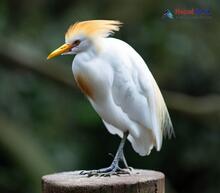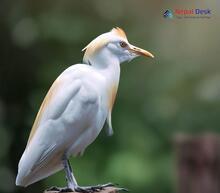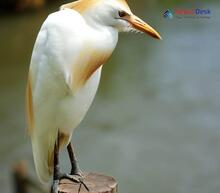Nepal, a mesmerizing nation nestled among the Himalayas, is renowned for its stunning landscapes, deep-rooted cultural history, and remarkable biodiversity. Amidst this lively wildlife, the Bubulcus genus of birds holds a special appeal for bird enthusiasts and nature lovers alike. Here, we'll take the journey into the captivating realm of Nepal's Bubulcus birds and uncover their distinct traits, habitats, and conservation measures.
Getting to Know the Bubulcus Genus
As members of the Ardeidae family, Bubulcus birds comprise a genus of petite to medium-sized wading birds, which include cattle egrets (Bubulcus ibis) among other related species. These graceful beings often don radiant white feathers accompanied by orange-tinted patches on their heads and chests during mating season. Boasting notable long legs and necks, Bubulcus birds are aptly suited to their wetland homes.
Living Spaces and Behavior
Bubulcus species flourish in an array of environments throughout Nepal—ranging from marshes and riverbanks to farmlands and grassy fields. They show a special fondness for residing near livestock such as buffaloes or cows because these animals aid in finding insects by disturbing vegetation. Moreover, Bubulcus birds frequently perch atop large mammals, feasting on ticks and other parasites in a unique symbiotic relationship.
Being social creatures by nature, these birds tend to form extensive communal roosts at night or assemble in large flocks while foraging for sustenance during daylight hours. Their diet mainly consists of insects and small vertebrates.
Protecting Our Feathered Friends
Although Bubulcus birds are not presently categorized as endangered or at risk in Nepal, they face multiple challenges like habitat destruction, pollution, and the use of detrimental pesticides in farming. To safeguard these extraordinary birds and ensure their ongoing presence in Nepal's thriving ecosystem, it's crucial to encourage sustainable land management strategies, wetland conservation programs, and increased awareness about the Bubulcus genus within local communities.
In Conclusion
The Bubulcus genus undoubtedly fulfills an essential function in maintaining Nepal's ecological harmony across various habitats. As alluring as they are captivating, these birds provide natural pest control and enhance Nepal's wildlife experiences for both residents and visitors. Through heightened awareness and preservation efforts, we can continue to admire the bewitching Bubulcus birds and appreciate their exceptional contributions to Nepal's natural legacy for generations to come.




